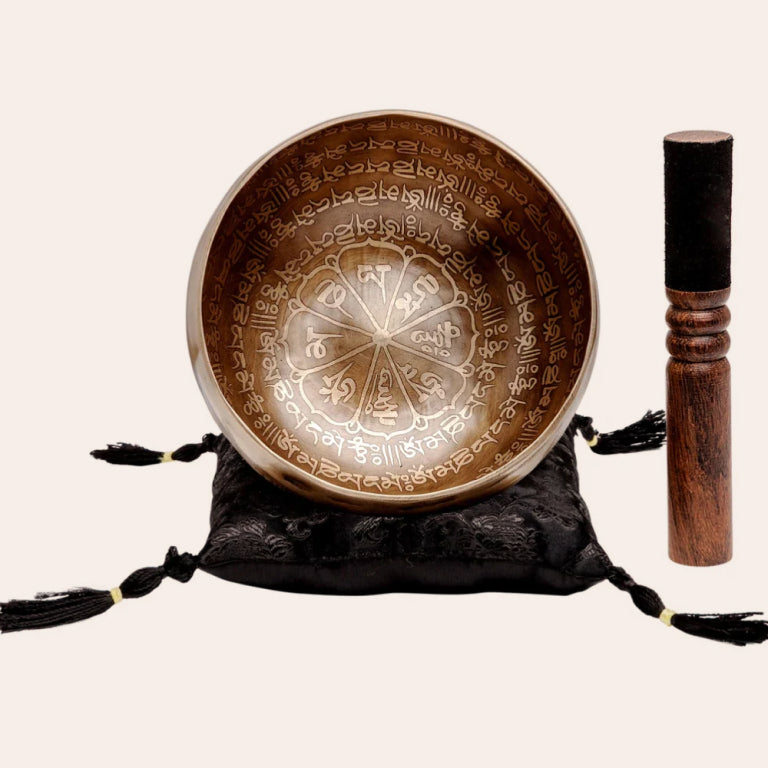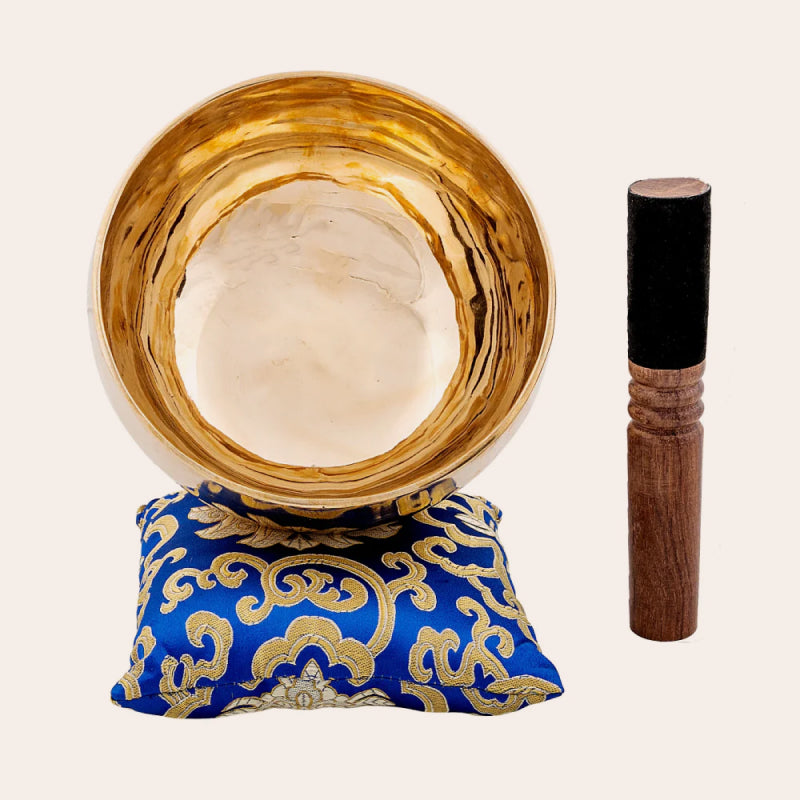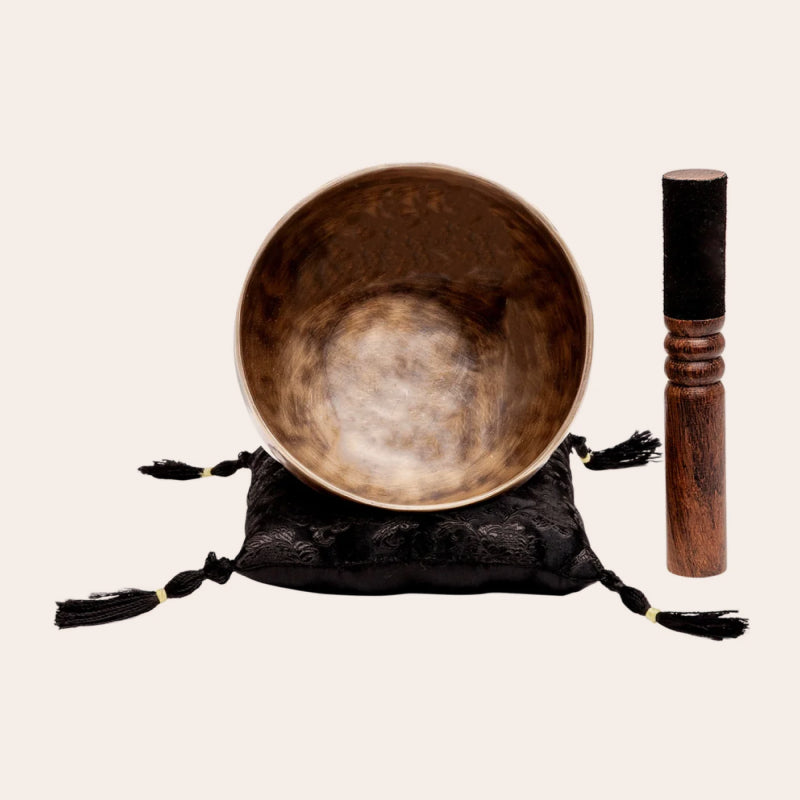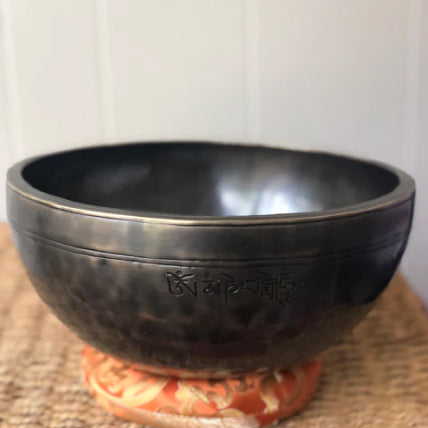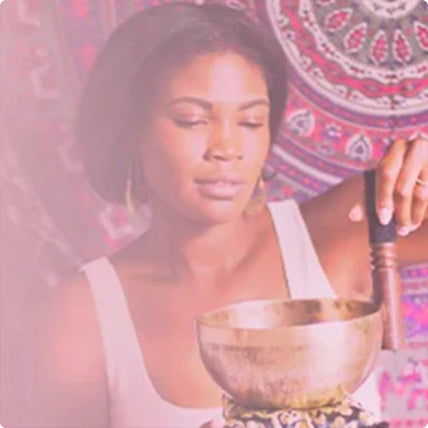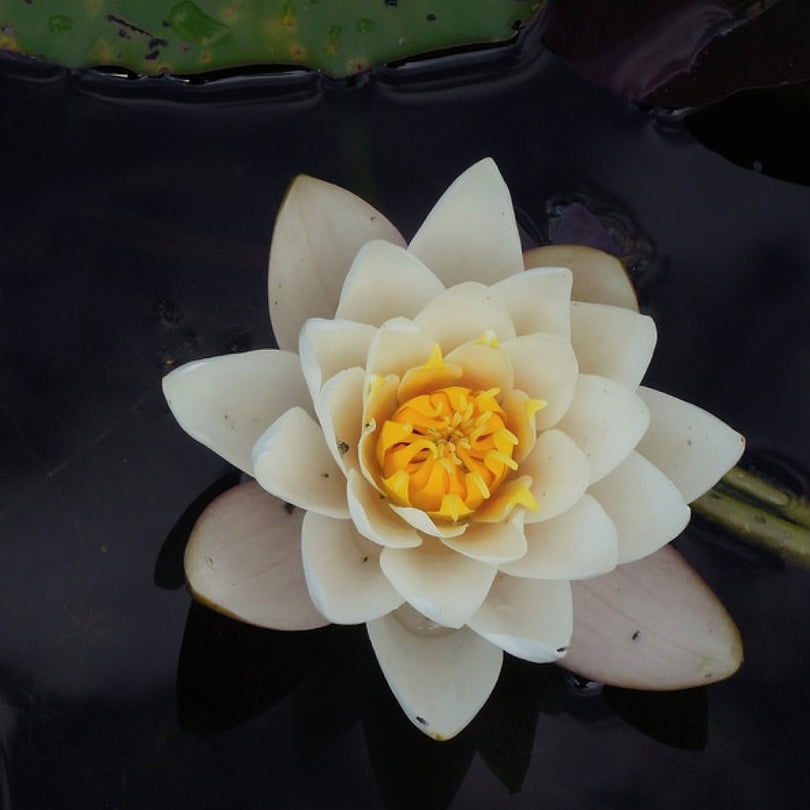9 Different Types of Tibetan Singing Bowls: Does The Size of a Singing Bowl Matter?
With the use of singing bowls going back centuries, there are several sizes and shapes of singing bowls at present.
In this article, you will learn the different types of Tibetan bowls, and how the size of the bowl impacts the way that it will play!
There are eight tradtional, "old style" main Himalayan bowls: Thadobati, Jambati, Ultabati, Naga, Mani, Manipuri, Remuna, and Lingam bowls. The ninth one is called Coprabati. Each type has unique features when it comes to sound, size, weight, dimension, and costs, as they were used for different purposes way back when.
Does the size of a singing bowl matter?
Yes, the size of a singing bowl significantly affects the sounds and vibrations it creates.
That's mainly because Tibetan bowls are idiophones. An idiophone is a sound instrument that relies on its own vibrations to make a sound.
Even a dent can affect the bowl enough to distort its sound, as we learned recently.
Do small singing bowls work? What are small singing bowls used for?
Singing bowls between 3 to 6 inches in diameter are considered to be small bowls. Due to their high frequencies, they're excellent for cleansing and charging higher chakras like third eye and crown.
What about medium-sized Tibetan bowls?
Medium singing bowls usually in the range of 7 to 8 inches in diameter.
How big are large-sized singing bowls?
On the other hand, large-sized bowls are 9 inches in diameter and above. There are so many varieties available that you can easily find sound bowls of 22 to 33 inches (big enough for kids to fit inside!)
The largest singing bowl in the Guinness Book of World Records is 84 inches or 7 feet in diameter.
What Are The Eight Different Sizes Of Tibetan Singing Bowls?
As Tibetan bowls are an ancient sound instrument, up to 50 types are available in vintage and mint conditions.
But, as these 50 types are quite similar, most bowl experts quote the following eight. Let's look at each of their dimensions, frequencies, tones, and other characteristics.
Here's a table to have a quick glance at the different dimensions and costs of the eight types before we learn more about them.
|
Name |
Diameter (Inches) |
Height (Inches) |
Weight (lbs) |
General Cost |
|
Thadobati |
4 to 9 |
2 to 4 |
0.5 to 1.70 |
$50 to $850 |
|
Jambati |
9 to 16 |
4 to 8 |
2.2 to 14 |
$400 to $6,000 |
|
Ultabati |
10 to 16 |
4.5 to 6.5 |
3.3 to 10 |
$450 to $3,500 |
|
Naga |
2 to 8 |
1.9 to 7.8 |
0.5 to 3.3 |
$100 to $650 |
|
Mani |
4 to 9 |
2 to 5 |
0.8 to 5.5 |
$180 to $ $1,050 |
|
Manipuri |
3.5 to 9 |
1.5 to 4 |
0.5 to 3.3 |
$55 to $480 |
|
Remuna |
6 to 8 |
3 to 4.5 |
1 to 1.75 |
$160 to $540 |
|
Lingam |
3.5 to 10 |
1.5 to 4 |
0.5 to 5 |
$270 to $6,480 |
Thadobati
Thadobati bowls have high walls and broad flat bottoms in small to medium sizes. The sidewalls of this singing bowl are straight with a plain or grooved lip. Thadobati bowls date back to the 15th century and have a vocal range of five octaves.
Jambati
The largest type of Tibetan bowl, a single Jambati is made with the skills of at least four craftsmen to produce. They're known for their curved walls and curved sides that feature flat bottoms. Most Jambati in the market are hand-hammered or incised with mantras and can play up to four octaves.
Ultabati
Resembling a cauldron in shape, Ultabati has a rounded bottom with a lip curved outward. This is also a large singing bowl like Jambati, but Ultabati usually has hammered, blackened, or mottled sides.
Ultabati is mostly famous for producing a resonant OM sound that lasts long after you stop playing. Hence, it's also called the Om Bowl.
Naga
Have you seen singing bowls that look like chalices? Also called pedestal bowls, Naga bowls are mostly thin with rounded bottoms.
They have a vocal range of five octaves like Ultabati but aren't as resonant as Thadobati. Moreover, Naga bowls were used prominently as offering bowls in religious ceremonies and are extremely rare nowadays.
Mani
A type of conical singing bowl with a flat bottom, Mani bowls have tapering walls with a lip curved inward. It has a vocal range of 3rd and 6th Octaves that aren't as easy to play as other types of Tibetan bowls.
Mani sound bowls were traditionally used for prayer rituals and is often called mudra bowls in the 16th and 18th centuries. Their unique shape resembles an elephant's foot and is called "charma bowls."
Manipuri
A shallow shape that looks similar to a soup or pasta bowl, Manipuri bowls typically have a range of 3rd and 6th Octaves. Their splayed lips and rounded bottoms make Manipuri singing bowls easy to play.
You might notice Manipuri bowls with ornate rims of mala beads and spiritual motifs with a golden-bronze finish. They were usually used for water spirit ceremonies and rituals.
Remuna
Showing a bulbous and hammered appearance with thin walls, Remuna has a wider belly than its mouth. This type of singing bowl sometimes has a raised mound in the center but is different from Lingam bowls. The vocal range of Remuna goes from 3rd and 5th Octave.
Lingam
With a protruding center and bold lip, lingam bowls are the rarest type of bowls. Lingam bowls feature a unique purity to their sounds and interesting shallow shape. It's believed to invoke God Shiva when played due to its sweet and resonant sound covering the 3rd and 6th Octaves.
Ninth Type Of Bowl: What's A Coprabati Bowl?
A relatively unknown variety of singing bowls is Coprabati or Lotus bowls. They're available in diameters between 6" to 8". A balanced Coprabati has a vocal range of 2nd and 3rd Octave. Typically, Coprabati sound bowls have thin walls and hammered walls.
You can get a Coprabati bowl for around $650.
How To Choose The Right Size Of Singing Bowl For You
There isn't any right or wrong way to choose a singing bowl because there are many ways to do so. That's why the way we most often recommend you pick one is based on the sound -- and how it resonates with you.
You can also pick the best singing bowl based on how experienced you are.
A small to medium-sized bowl like Jambati will do if you're a newbie. But if you're a singing bowl collector, it's best to go with bowls you don't already have.
As you know, the more bowls you add to your collection, the better harmonies you can create by playing them together.
Final Thoughts: Do You Know What Type Of Singing Bowl You Have?
Now you know all the nine types of Tibetan bowls. Most of the bowls we know today fall into one or more of these categories.
Apart from all the above nine types of metal singing bowls, there are also crystal singing bowls today. The main types of Tibetan bowls are metal because crystal bowls are a new invention.
If you're new to these bowls, compare crystal vs. metal bowls with this post.
I hope this post helped you understand how to recognize nine types of Tibetan bowls by their sizes, tones, and shapes.
So, what's your favorite type of singing bowl?

